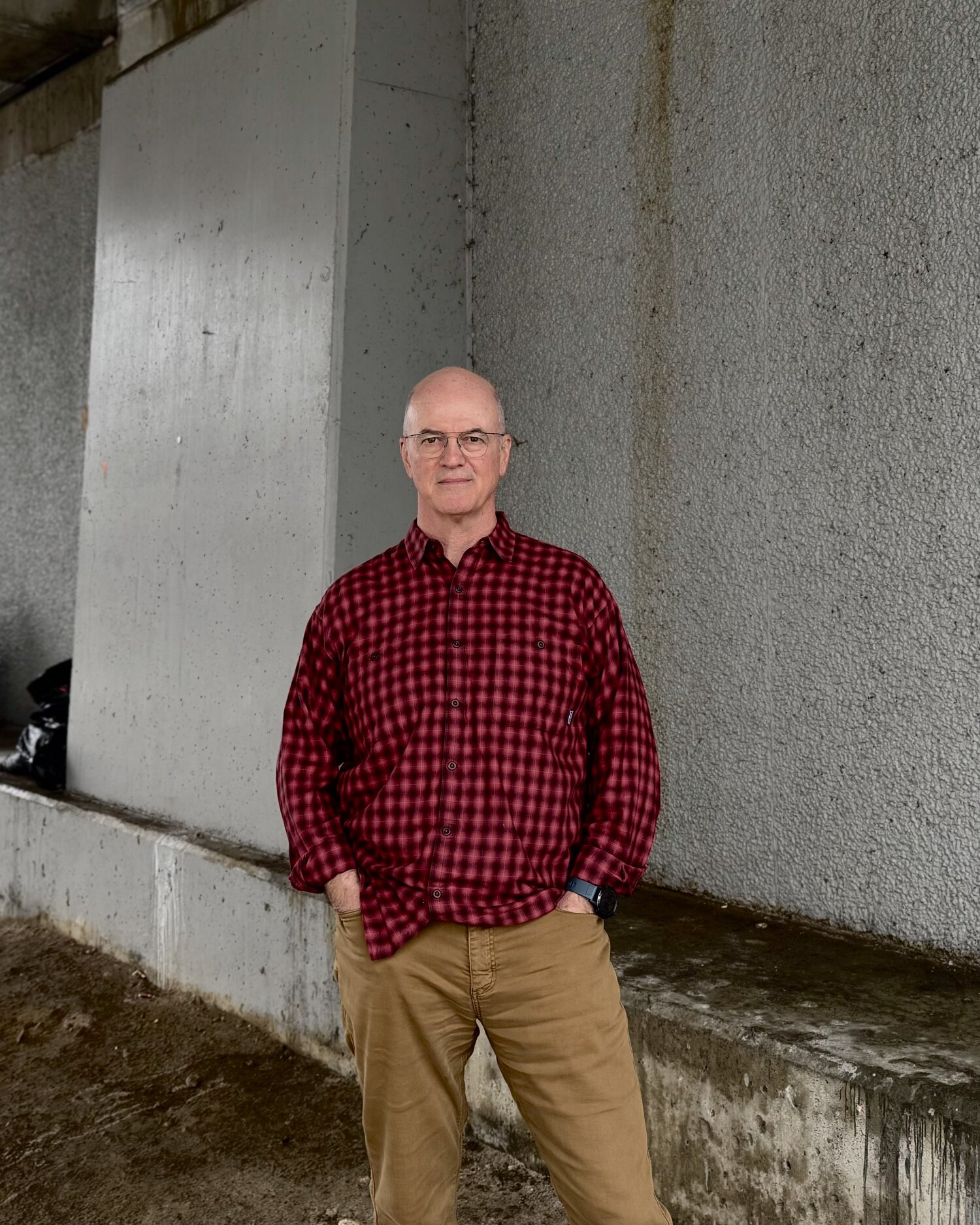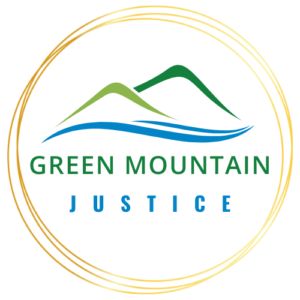Freedom & Unity: Breaking the Myth of Scarcity

Originally published in the Addison Independent, September 11, 2025
“Isn’t that the American dream?” a newly unhoused neighbor asked me as we sat on a bench while she ate her free sandwich from a community lunch program. “Work hard, follow the rules… it’s as American as apple pie, right? I’m 60 years old. I worked all my life. Raised my kids by myself. And now, I’ve got nothing. People look at me like there’s something wrong with me. Well, they got theirs. Their dream, their nice home and friends and stuff. Neighbors used to care for each other. Now, rich folks think the system’s going to take care of us. Well, guess what, the system’s broke, just like us.”
This conversation is not unusual for those of us at Green Mountain Justice. More neighbors are calling our community ministry for help with rent, utilities, car repairs, food, camping gear and basic necessities. Most find us through mutual friends, knowing we’re a ministry that forms relationships with folks needing care and connection. As Vermonters know, good neighbors care for one another.
Yet as I journey with housing-insecure neighbors, I’ve noticed something troubling: the anguish of lost self-worth. Living in survival mode doesn’t lend itself to recognizing the transcendent truth that everyone deserves dignity. Instead, our neighbors living at the intersections of what I call intersectional impoverishment — facing not just material poverty but relational poverty, powerlessness and systemic classism — are fed daily doses of shame and self-doubt. At the root of this culture is the myth of scarcity.
Leaders Peddling Scarcity
Recent Vermont history reveals how this myth becomes institutionalized. In March, Gov. Scott vetoed the Legislature’s Budget Adjustment Act, which would have kept vulnerable families sheltered in motels through June. His rationale? Fiscal constraint and the “cost” of the motel program.
But was $1.8 million really prohibitive? That represented just 0.008% of Vermont’s $9.04 billion budget — or 2.7% of our projected fiscal surplus. Hundreds of Vermonters were evicted onto the streets to preserve what amounts to a rounding error in state spending.
This isn’t about Gov. Scott’s decision — it’s about how scarcity myths allow leaders to justify abandoning our most vulnerable neighbors while maintaining systems that benefit the privileged.
Abundance Around Us
The scarcity myth runs deeper than politics. It conditions us to view relationships through a zero-sum lens, where we maximize advantages for ourselves and our groups, leaving charitable remainder for the “less fortunate.” This mindset creates troubling contradictions.
How is it that Americans have built more three-car garages than one- and two-bedroom apartments over the past decade? Vermont cites a 3.7% vacancy rate as driving homelessness, yet look around: How many empty bedrooms and safe spaces sit vacant in your community right now? We need 24,000-36,000 additional homes, yet how are we leveraging the 50,000 seasonal homes vacant most of the year?
Vermont has one of the nation’s highest per capita homelessness rates — over 4,500 people, a 300% increase since 2019. Nearly half are children or elderly Vermonters who don’t fit stereotypical “vagrant” models. Add Vermont’s 1,100+ foster children, and the picture becomes clearer: this isn’t about individual failings but systemic choices.
Consider America’s foster care system, where over 20,000 young people “age out” annually without permanency. Half won’t earn livable wages by 24. Half will encounter the criminal justice system. Less than 3% will receive post-secondary education. Yet with 370,000 religious congregations nationwide, if just one family in every 18 congregations adopted one foster child, we’d eliminate aging out entirely.
The resources exist. The question is whether we’ll organize around abundance or remain trapped by scarcity.
From Performance to Connection
Vermont has always embraced social activism. “Hands Off” rallies drew 10,000 people. “No Kings” demonstrations engaged 60,000 participants. Yet fewer than 900 citizens contacted the governor about evicting neighbors from shelter. Even fewer protested after the veto.
This disparity suggests our activism may be becoming more performative than transformative. Have we become so conditioned to rely on failing institutions that we mistake writing checks and donating unwanted items for meeting our responsibilities to each other?
Like us privileged folks, systems and institutions developed in these current conditions have grown comfortable with the status quo. Yet the proportion of our neighbors and their children suffering from hunger, housing insecurity, isolation, and untreated illnesses continues to increase. As Bishop Dwayne Royster, Director of Faith in Action, says, “The status quo benefits the empire.” It is time to stop expecting better outcomes from comfortable approaches, systems and institutions that are clearly not working. It is time to take some risks, center the needs of the marginalized, and more directly connect with our neighbors in need.
Choosing Abundance
In this richest country on earth, in this arguably most progressive state, we’ve traded our willingness to care for vulnerable neighbors for abstract arguments rooted in manufactured scarcity.
But we live in abundance, especially those privileged to call these Green Mountains home. The path forward isn’t through systems and institutions — it’s through rediscovering what Vermonters have always known: We are responsible for each other.
Vermont’s values call us beyond the myth of scarcity toward a culture of abundance. The question isn’t whether we have enough — we do. The question is whether we’ll choose connection over separation, trust over fear, and care over indifference.
At Green Mountain Justice, we believe in “building, repairing, and sustaining lives and communities of justice and equity one relationship at a time.” We work in the intersections where neighbors are struck by impoverishment and marginalization, collaborating with partners committed to repairing “the busted seam between the American promise of ‘justice for all’ and the realities of disenfranchisement.”
This work requires what we call “an interdependent, relational, neighbor-centric approach” — one that helps everyone find purpose and meaning, form healthy relationships, and connect with what transcends our individual circumstances to create space for authentic love and joy.
The Choice is Ours
The path forward isn’t waiting for systems to change. It’s choosing to embody Vermont’s motto of “freedom and unity” by ensuring our neighbors’ freedom to live with dignity and our unity in making that possible. As civil rights leader Bryan Stevenson reminds us, “Wherever you are, find ways to get proximate to people who are suffering.”
This means opening our doors, sharing our tables, and spending more time eye to eye with our neighbors — which may mean spending less time eye to screen. It means recognizing that “we care for the well-being of our communities by caring for our neighbors” through the proximity that builds understanding rather than the distance that enables indifference.
Our neighbors are waiting. The choice — and the abundance — is ours.
Tom Morgan is a Panton neighbor and founder of Green Mountain Justice.
About This Series
This article is the seventh and last of the Addison Independent’s “Freedom & Unity” series, a partnership with Green Mountain Justice, examining how Vermont’s state motto manifests in our communities today. The series explores perspectives on justice, equity, and interdependence from diverse voices across our region.
About Green Mountain Justice
Green Mountain Justice is a Vermont community justice ministry guided by Unitarian Universalist values, working to create beloved community through direct neighbor care, advocacy, and systemic change. We believe in building, repairing, and sustaining lives and communities of justice and equity one relationship at a time. Learn more at greenmountainjustice.org.
